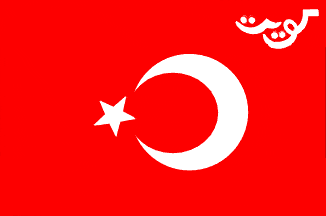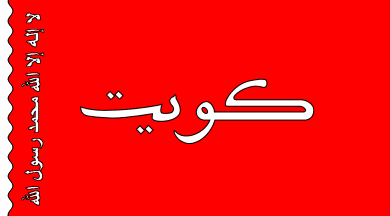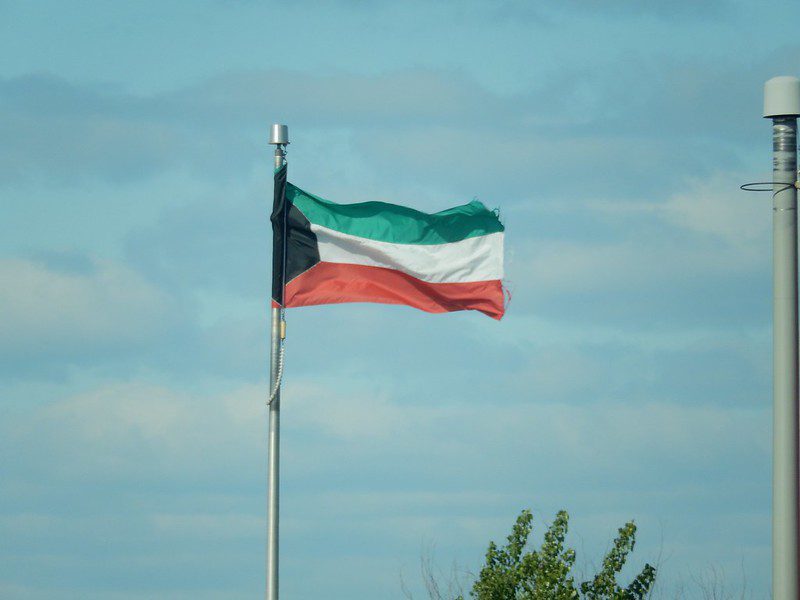Kuwait, a small nation located in the Middle East at the Northwest corner of the Arabian Gulf, has a rich history and is governed by the Sabah family. The city of Kuwait was established in the 1700s as a hub for maritime trade between Arabia and India and since then the flag of Kuwait has changed more than once, it eventually emerged as a major port for Mesopotamia and the Arabian Peninsula. After many years of struggles, Kuwait achieved full independence from Britain in 1961, and the current flag was adopted in the same year.
The flag of Kuwait in the 1900s
Before adopting the current flag, Kuwait’s flag was characterized by a red field with a crescent and a star during the Ottoman Empire. A similar design was adopted with an Arabic inscription on the flag as part of an agreement between Kuwait and the British in 1899. The moon and star were made larger in 1909, and the text was placed in the top right corner. In 1915, the moon and star were removed, and the Arabic inscription was moved to the centre, with a broad white stripe added to the left side.

The flag of Kuwait between 1920-1956
When Kuwait was declared an independent country under a British protectorate in 1921, the flag was altered once again. The red backdrop and the Arabic inscription of the Shahada, which means “there is no god but God; Muhammad is the messenger of God,” remained in use until 1940. At this point, the Sabah family logo was added, creating the current design that was kept until 1956. This was replaced with a red background and a white wavy stripe along the left edge, and it too had the Shahada lettering.

The flag of Kuwait in the 1960s
On October 24th, 1961, Kuwait officially adopted a new Pan-Arab-coloured flag, which remains in use to this day. It is composed of three horizontal stripes in green, white, and red with a black trapezoid on the left side. The black trapezoid represents the country’s location at the head of the Persian Gulf, while the green colour represents the country’s prosperity, white represents peace, and red represents the blood of the country’s defenders.
Kuwait during the ’90s
Kuwait was invaded by Iraq on August 2, 1990, marking the beginning of the Gulf War. The Iraqi forces, led by Saddam Hussein, quickly overran Kuwaiti defenses and occupied the country. This triggered a massive international response, led by the United States, to liberate Kuwait and push back the Iraqi military.
Kuwaiti citizens suffered greatly under the oppressive rule of the Iraqi regime. Many were subject to forced labor, torture, and even execution. The Iraqi military looted the country’s resources, including its vast oil reserves, which were set on fire as they retreated. The environmental damage caused by the fires lasted for years and had a devastating impact on the country’s economy and public health.
The international coalition worked tirelessly to push back the Iraqi forces and free Kuwait. After months of intense fighting, coalition forces liberated Kuwait on February 26, 1991, ending one of the most significant conflicts in modern history.
Despite the many challenges Kuwait faced during the Gulf War, the country emerged from the conflict as a strong and united nation. Kuwait’s experience during the war left an indelible mark on its people, shaping their values and fortifying their determination to never give up in the face of adversity.
Image Credit: Andrew Fackler/Flickr



















